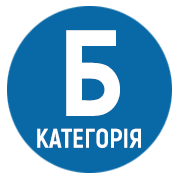FEATURES OF BLENDED LEARNING TECHNOLOGY IN THE SYSTEM OF HIGHER EDUCATION
DOI:
https://doi.org/10.25128/2415-3605.22.2.3Keywords:
ICT, blended learning, distance learning, forms of learning, higher education applicantAbstract
The essence of the notions of “blended learning”, and “distance learning” and their importance in higher education have been highlighted. The history of “blended learning”(BL) origin is considered as well as various approaches of the researchers regarding the interpretation of that definition are presented. To achieve the goal of the research, such methods as analysis, synthesis, the study of scientific literature, and Internet sources on the particularly pertinent problem of BL implementation within modern higher education conditions are used. Based on the analysis of scientific and pedagogical literature, some tendencies in the implementation of BL in the system of higher education have been summarized. It has been stated that Bl, as a groundbreaking technology, can’t appear on its own and is unable to exist in its pure form but it must be a flexible system of distance learning, added with a direct interaction of a professor and education applicants during traditional learning that, in its turn, will predominantly allow intensifying the educational process, building out and increasing the effectiveness of self-study work. It has been clarified that common to the definition of BL is the interaction of subjects in the educational process by combining three different ways of learning: distance learning (DL), traditional learning, and independent learning. DL is supposed to take into account the changes that have taken place in the educational information structure of modern society, which determines the relevance of the development and implementation of ICT. It can be considered as a means of modernizing the education system, enriching the quality of BL by adding the extensive application of ICT and lifting it to new levels. Its strengths and weaknesses are subjected to scrutiny, where the latter can be weakened or eliminated through the active usage of the advantages of BL as a demanding form of modern education. It has been postulated that, firstly, the pertinence to the introduction of BL is predominantly based on the fact that it is impossible to accomplish academic achievements, by realizing only one pedagogical technology. Secondly, it is not worth contradicting distance (online) and traditional (face-to-face, offline) learning, drawing attention that nowadays both forms of learning are not being applied in a pure form. Thirdly, DL will never displace offline learning and the main purpose of BL lies in not pushing out this form of learning but integrating it effectively. It has been inferred that BL cultivates opportunities to optimize the timing expenses of a teacher and increase the efficiency of the learning process in general. Furthermore, a student has become an active participant in the learning process, who can build up an individual learning trajectory.
References
Барна О. В. Технологія змішаного навчання в курсі методики навчання інформатики. Збірник наукових праць у рамках міжнародного проекту IRNet Електронне наукове фахове видання ВІДКРИТЕ ОСВІТНЄ Е-СЕРЕДОВИЩЕ СУЧАСНОГО УНІВЕРСИТЕТУ. Київ, 2016. Вип. 2. С. 84–90.
Блощинський І. Г. Сутність та зміст поняття «дистанційне навчання» в зарубіжній та вітчизняній науковій літературі. Вісник Національної академії Державної прикордонної служби України. 2015. Вип. 3. URL: http://nbuv.gov.ua/UJRN/Vnadps_2015_3_4
Болюбаш Н. М. Використання сучасних інформаційних технологій у професійній підготовці економістів. Інформаційні технології і засоби навчання. 2009. № 5 (13). URL: http://journal.iitta.gov.ua/index.php/itlt/article/view/178/164
Кіяновська Н. М., Рашевська Н. В., Семеріков С. О. Теоретико-методичні засади використання інформаційно комунікаційних технологій у навчанні вищої математики студентів інженерних спеціальностей у Сполучених Штатах Америки: монографія. Кривий Ріг: Вид. відділ ДВНЗ «Криворізький національний університет». 2014. Вип. 1(5). 316 с.
Кухаренко В. М., Бондаренко В. В. Екстрене дистанційне навчання в Україні: монографія. Харків: Вид-во КП «Міська друкарня», 2020. 409 с.
Лісецький К. А. Особливості запровадження системи змішаного навчання у ВНЗ URL: https://cutt.ly/7v7KAhp
Рекомендації щодо впровадження змішаного навчання у закладах фахової передвищої та вищої освіти. URL: https://mon.gov.ua/storage/app/media/vishcha-osvita/2020/zmyshene%20navchanny/zmishanenavchannia-bookletspreads-2.pdf
Смирнова-Трибульська Є. М., Бацуровська І. В., Ручинська Н. С. Перспективні напрямки модернізації вищої освіти. Актуальні проблеми державного управління, педагогіки та психології. 2014. Вип. 1. С. 46–49.
Теорія та практика змішаного навчання: монографія / за заг. ред. В. М. Кухаренка. Харків: «Міськдрук», НТУ «ХПІ», 2016. 284 с.
Ткачук Г. В. Теоретичні і методичні засади практично-технічної підготовки майбутніх учителів інформатики в умовах змішаного навчання: дис. ... д-ра пед. наук: 13.00.02 Київ, 2019. 447 с.
Триус Ю. В., Герасименко Ю. В. Комбіноване навчання як інноваційна освітня технологія у вищій школі. Теорія та методика електронного навчання: збірник наукових праць. Вип. ІІІ. Кривий Ріг, 2012. С. 299–308.
Шаран Р. В. Розвиток дистанційної освіти у США. Педагогічна освіта: теорія і практика. 2012. Вип. 11. С. 118–122.
Штихно Л. В. Дистанційне навчання як перспективний напрям розвитку сучасної освіти. Молодий вчений. 2016. № 6 (33). C. 489–492.
Blended Learning. URL: https://www.christenseninstitute.org/wp-content/uploads/2014/06/Is-K-12-blended-learning-disruptive.pdf
Blended Learning Models. URL: https://www.christenseninstitute.org/multimedia/heather-staker-explains -blended-learning-models/
Bonk C. J., Graham С. R. The Handbook of Blended Learning: Global erspectives, Local Designs. San Francisco: Jossey-Bass/Pfeiffer, 2006. 624 p.
Collins English Dictionary / General consultant J. M. Sinclair; 3rd ed. The USA: Harper Collins Publishers, 1991. 1791 p.
Learning Networks: A Field Guide to Teaching and Learning Online / L. Harasim et al. Cambridge MA: MIT Press, 1995. 145 p.
Makewa L. N., Kuboja J. M, Yango M, Ngussa B. M. ICT-Integration in Higher Education and Student Behavioral Change: Observations at University of Arusha, Tanzania. American Journal of Educational Research. 2014, 2 (11A):30–38. DOI: 10.12691/education-2-11A-5
Measuring Learning: An NMC Horizon Project Strategic Brief / L. Johnson et al. Texas: The New Media Consortium. 2015. Vol. 2.2. URL: https://www.learntechlib.org/p/182093/
Moore M., Anderson G., William G. Hand book of distance Education. N. J.: Erlbaum Associates, 2003. 362 p.






